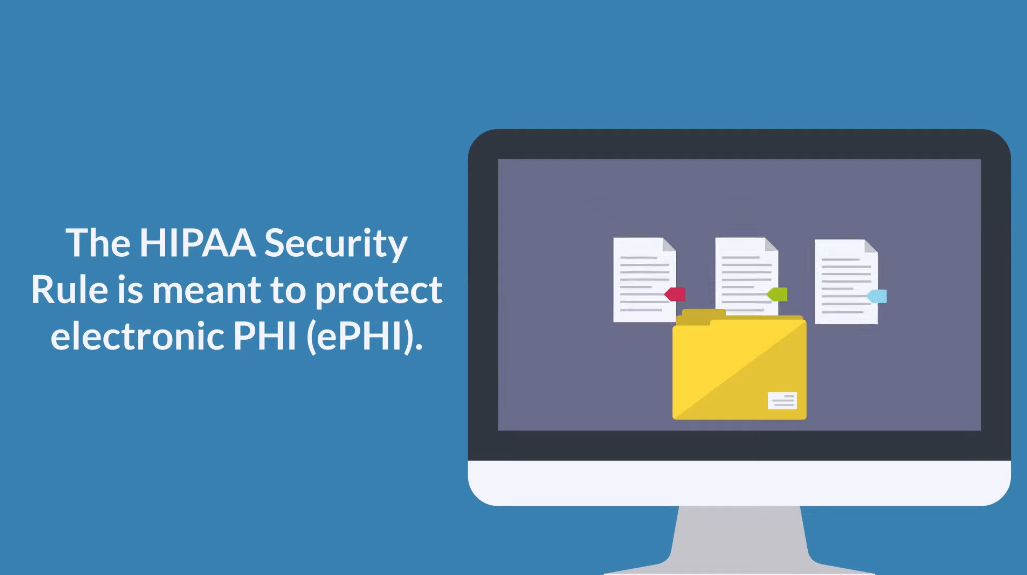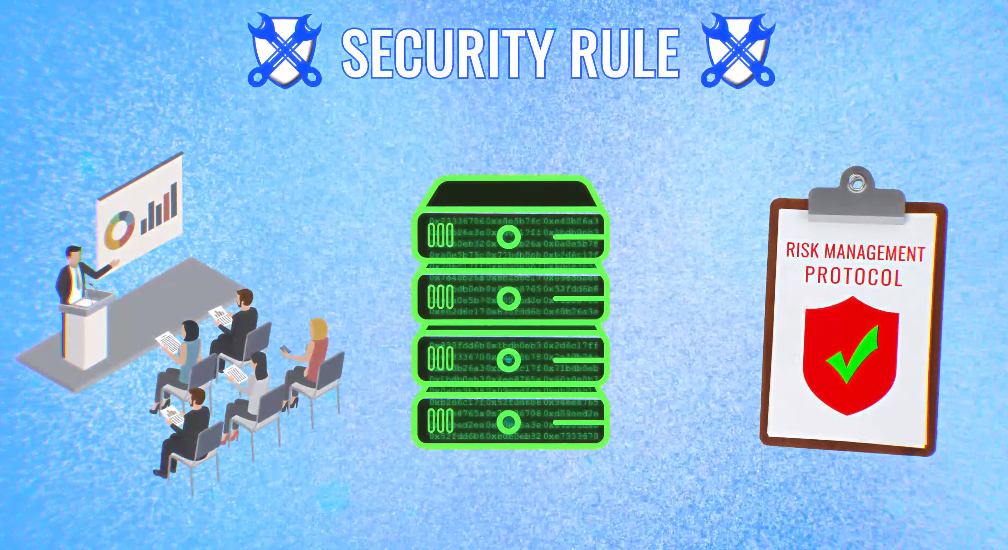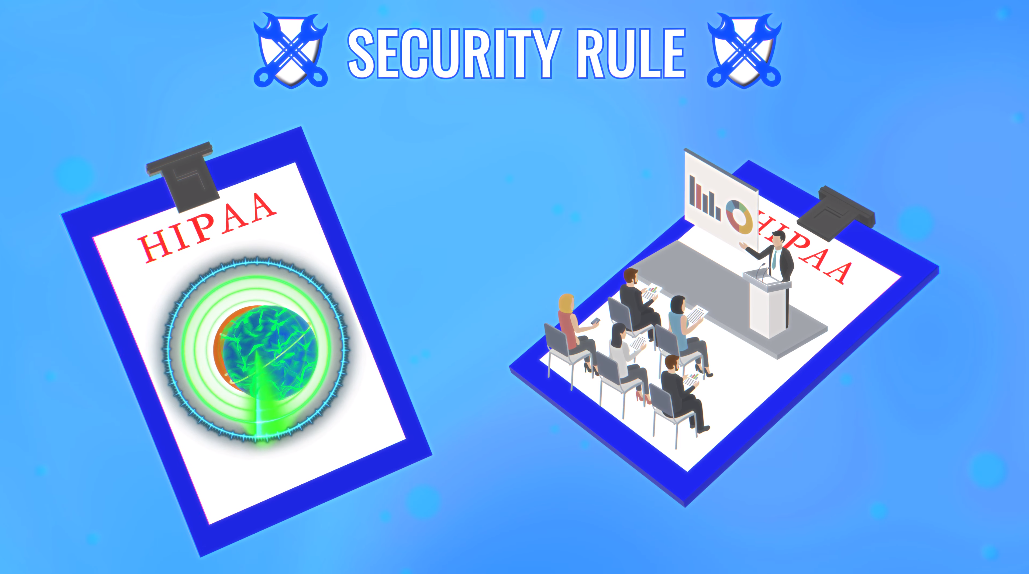Introduction

Health data security is paramount as it contains sensitive and confidential information about individuals’ medical histories and personal details. Any unauthorized access or breach of this data can lead to grave consequences, such as identity theft, financial fraud, and even discrimination. Therefore, healthcare organizations must ensure their systems are secure and comply with the relevant laws and regulations. Overview of the Law Covering System Security of Health Data
The law that covers the system security of health data is the Health Insurance Portability and Accountability Act (HIPAA) Security Rule. This rule sets out the standards covered entities, such as healthcare providers and health plans, must follow to ensure the confidentiality, integrity, and availability of electronic protected health information (ePHI).
Key Requirements Of The HIPAA Security Rule

The HIPAA Security Rule requires covered entities to devise administrative, physical, and technical safeguards to protect ePHI. Some of the key requirements include:
- Conducting a risk analysis and implementing measures to mitigate identified risks
- Implementing access controls to ensure that only authorized individuals can access ePHI
- Implementing audit controls to track access to ePHI
- Implementing transmission security measures to protect ePHI
Law Covering The System Security Of Health Data
The Health Insurance Portability and Accountability Act (HIPAA) covers the system security of health data.
HIPAA And The Security Rule

The Health Insurance Portability and Accountability Act (HIPAA) includes a Security Rule that sets national standards for defending the confidentiality, integrity, and availability of electronic protected health information (ePHI). The Security Rule requires covered entities, such as healthcare providers and health plans, to implement administrative, physical, and technical safeguards to protect ePHI. This includes conducting a risk analysis and implementing access controls, audit controls, and transmission security measures. The goal of HIPAA is to ensure the confidentiality, integrity, and availability of ePHI and to protect individuals’ privacy rights.
Is HTTPS Secure For Patient Data?
Yes, HTTPS is a secure protocol for transmitting patient data online. HTTPS encrypts the data transmitted between the web server and the user’s browser, making it difficult for unauthorized individuals to intercept and read the data. However, it’s important to note that HTTPS alone is not enough to ensure the security of patient data. As HIPAA requires, healthcare providers and other covered entities must implement other security measures to protect ePHI and safeguard patients’ privacy.
HITECH Act
The HITECH Act (Health Information Technology for Economic and Clinical Health Act) was passed in 2009 as part of the American Recovery and Reinvestment Act. The HITECH Act aims to promote the adoption and meaningful use of health information technology, such as electronic health records (EHRs), to improve healthcare delivery quality, safety, and efficiency. The HITECH Act also includes provisions for strengthening the privacy and security safeties for individually identifiable health information, as HIPAA requires. Under the HITECH Act, healthcare providers and other covered entities that experience a breach of unsecured protected health information (PHI) affecting more than 500 individuals must notify those individuals.
State Data Breach Notification Laws
In addition to the HITECH Act, many states have data breach notification laws that require businesses and organizations to notify individuals in the event of a breach of personal information. These laws typically require notification to affected individuals within a certain timeframe and may also require notification to state agencies or the attorney general’s office. It is important for healthcare providers and other covered entities to be aware of both federal and state laws regarding data breaches and to have proper protocols in place to respond to and prevent such incidents.
GDPR
The General Data Protection Regulation (GDPR) is a European Union (EU) law that governs the collection, use, and processing of personal data of EU citizens. It applies to all organizations, regardless of their location, that process the data of EU citizens. The GDPR provides individuals the right to know what data is being collected about them, access it, and have it erased in certain circumstances. Organizations that violate the GDPR can face significant fines and penalties. Businesses must understand and comply with the GDPR to avoid legal and financial consequences.
Cybersecurity Information Sharing Acts
The Cybersecurity Information Sharing Acts (CISA) are a series of laws passed in the United States that encourage sharing of cybersecurity threat information between private entities and government agencies. The goal of CISA is to improve the ability of organizations to detect and respond to cyber threats by allowing them to share information about threats and vulnerabilities with the government. CISA provides liability protection to organizations that share information in good faith and includes privacy protections to ensure that confidential material is not shared unnecessarily. However, CISA has been controversial due to concerns about privacy and government surveillance, and its effectiveness in improving cybersecurity is still debated.
Security of Health Data

Cloud Computing And Health Data Security
Cloud computing has become increasingly popular in the healthcare industry due to its ability to store and share large amounts of data. However, this has also raised concerns about the security of sensitive health information. The Health Insurance Portability and Accountability Act (HIPAA) requires healthcare providers to protect patient information. Still, there have been data breaches and unauthorized access to health records in the cloud. To address these concerns, healthcare organizations implement various security actions such as encryption, access controls, and regular security audits. Cloud service providers must also comply with HIPAA regulations and may offer additional security features such as data backup and disaster recovery.
Overall, while cloud computing offers many benefits for healthcare organizations, it is important to prioritize the security of patient data to maintain trust and compliance with regulations.
Medical Device Security
Medical device security is becoming increasingly important as more medical devices connect to the internet. These devices can include anything from pacemakers to insulin pumps to hospital equipment. One of the main concerns with medical device security is the potential for cyber attacks. Hackers could access and control these devices, affecting patient health and safety.
Medical device manufacturers implement various security measures like encryption, authentication, and access controls to address this issue. They are also working to ensure that devices are updated with the current security patches and that security is considered throughout development.
Healthcare organizations can also improve medical device security by implementing policies and procedures for device management and security and ensuring that employees are trained to use and secure these devices properly.
Medical device security is a critical issue requiring ongoing attention and investment to protect patient health and safety.
Business Associate Agreements
Business Associate Agreements (BAAs) are legal contracts between a covered entity (for example, a healthcare provider) and a business associate (such as a medical device manufacturer) that outline the responsibilities and requirements for protecting patient health information (PHI). BAAs are required by the Health Insurance Portability and Accountability Act (HIPAA) and its regulations.
BAAs typically include provisions for the business associate to implement appropriate safeguards to protect PHI, report any security incidents or breaches to the covered entity, and comply with HIPAA regulations. Covered entities may also require business associates to undergo security risk assessments and provide evidence of compliance with HIPAA regulations.
Penetration Testing
Penetration testing, also known as pen testing, assesses the safety of a computer system, network, or application by simulating the attack from a malicious source. A penetration test aims to identify vulnerabilities that attackers could exploit and provide recommendations for improving the system’s security. Penetration testing typically involves a team of security experts who use various tools and techniques to probe the system for weaknesses. These may include scanning for open ports and services, attempting to exploit known vulnerabilities, and using social engineering techniques to gain access to sensitive information.
The results of a penetration test can be used to improve the system’s security by addressing identified vulnerabilities and implementing additional security controls. Penetration testing is an important part of a comprehensive security program and is often required by regulatory frameworks such as PCI DSS and HIPAA.
Incident Response Planning
Incident response planning is a critical aspect of any organization’s security program. It involves developing a plan to detect, respond to, and recover from security incidents. This plan should include procedures for identifying and containing security incidents and communication protocols for notifying stakeholders and coordinating with external resources such as law enforcement and incident response teams. The incident response idea should be regularly reviewed and updated to remain effective despite evolving threats and changing business needs. It should also be tested through regular drills and exercises to ensure that all stakeholders are familiar with their roles and responsibilities during a security incident.
An effective incident response plan can help minimize the impact of security incidents and reduce the risk of data loss, reputational damage, and financial loss.
Risk Management
Risk management is crucial for any organization that wants to protect its assets and ensure business continuity. It involves identifying potential risks and vulnerabilities, assessing the likelihood and effect of those risks, and implementing measures to mitigate or manage them. Effective risk management requires a proactive approach that involves ongoing monitoring and assessment of the organization’s security posture. This includes regular vulnerability assessments, penetration testing, and security audits to identify potential weaknesses and areas for improvement.
Once risks have been recognized, organizations must prioritize them based on the potential impact and likelihood. This allows them to focus their resources on the most critical risks and implement appropriate controls to mitigate or manage them.
Risk management is an ongoing process that entails continuous monitoring and evaluation to ensure that controls remain effective and relevant. By taking a proactive approach to risk management, organizations can reduce the likelihood of security incidents and minimize their impact if they do occur.
Access Controls
Access controls are security measures to restrict access to sensitive information or systems. These controls can include passwords, biometrics, smart cards, and other authentication methods that ensure only authorized individuals can access a particular resource.
Access controls are critical for protecting confidential data and avoiding unauthorized access to systems and networks. They are a fundamental component of any security program and should be implemented across all levels of an organization.
Effective access controls require a comprehensive understanding of an organization’s information assets and the risks associated with their exposure. Access controls should be designed to meet an organization’s specific needs and regularly reviewed and updated to ensure they remain effective.
Encryption And Decryption
Encryption and decryption are important tools in securing sensitive information. Encryption is converting plain text into a coded message that can only be read by someone with the key to decrypt it. Decryption is the process of converting the coded message back into plain text. Encryption protects sensitive data such as passwords, credit card numbers, and other personal information. It can also protect sensitive communications such as email and instant messaging.
There are several types of encryption, including symmetric, asymmetric, and hashing. Each sort has strengths and weaknesses and should be chosen based on the organization’s needs.
Decryption keys should be kept secure and only shared with authorized individuals. It is also significant to regularly review and update encryption and decryption processes to ensure they remain effective against evolving threats.
Physical Security
Physical security is another important aspect of protecting sensitive information. This includes securing physical access to buildings, rooms, and equipment that store or process sensitive data. Access control measures such as locks, security cameras, and biometric authentication can help prevent unauthorized access.
Additionally, sensitive documents and equipment should be stored in secure locations and properly disposed of when no longer needed. Regular security audits and evaluations can help identify vulnerabilities and improve physical security measures.
Employee Training
Employee training is an important aspect of maintaining information security. All employees should receive training on handling sensitive data and identifying and responding to security threats. This includes training on password management, email security, and identifying phishing scams.
Employees should also be trained on the company’s security policies and procedures, including how to report security incidents and who to contact in case of a breach. Regular training sessions and refresher courses can help ensure that employees are up-to-date on security practices and protocols.
Third-Party Vendor Management
Third-party vendor management is also an important aspect of cybersecurity for companies. When working with third-party vendors, companies should ensure that the vendors have adequate security measures to protect any sensitive data they may have access to. This can include conducting due diligence on vendors before entering into contracts and regularly monitoring their security practices.
Companies should establish clear guidelines and protocols for working with third-party vendors, including data encryption, access controls, and incident reporting requirements. Regular communication and collaboration with vendors can also help identify and address potential security issues before they become major problems.
A comprehensive cybersecurity strategy should include technical measures, employee training, and third-party vendor management to protect against security threats. By taking a proactive approach to cybersecurity, companies can reduce the threat of data breaches and protect their sensitive information.
Privacy And Security Audits
Privacy and security audits are important components of any comprehensive cybersecurity strategy. These audits help companies identify potential vulnerabilities in their systems and processes and take steps to address them before cybercriminals can exploit them. During a privacy audit, a company will review its data collection, storage, and usage practices to ensure they comply with relevant laws and regulations. This may involve reviewing privacy policies, data retention policies, and access controls to ensure that sensitive information is only accessible to authorized personnel.
On the other hand, a security audit focuses on the technical aspects of cybersecurity. This may involve reviewing firewalls, intrusion detection systems, and other security measures to ensure they are up-to-date and effective. It may also involve conducting penetration testing to identify vulnerabilities that hackers could exploit.
Companies can avoid emerging threats by conducting regular privacy and security audits and ensuring that their cybersecurity measures effectively protect sensitive information. These audits can also help identify areas for improvement and guide the development of future cybersecurity strategies.
Cyber Insurance
Cyber insurance is another important aspect of cybersecurity for businesses. Cyber insurance policies cover losses and damages from cyber attacks, data breaches, and other cyber incidents. This can include coverage for legal fees, notification costs, and even lost revenue due to downtime.
A cyber insurance policy can provide peace of mind for businesses, knowing they have financial protection in the event of a cyber incident. However, it’s important to note that cyber insurance should not be understood as a replacement for strong cybersecurity practices. Instead, it should be viewed as a supplement to those practices.
Conclusion
Cyber insurance is becoming increasingly important in today’s digital age. As cyber threats develop and become more sophisticated, businesses must proactively protect themselves. Cyber insurance can provide financial protection in a cyber incident, but it should be considered a supplement to strong cybersecurity practices. By implementing a comprehensive cybersecurity strategy and investing in cyber insurance, businesses can better protect themselves and their customers from the devastating effects of cybercrime.
Frequently Asked Questions (FAQs)
What Is Cyber Insurance?
Cyber insurance protects businesses financially in a cyber incident, like a data breach or cyber attack.
Is Cyber Insurance Necessary For Businesses?
While cyber insurance is not required by law, it can provide financial protection to businesses in the event of a cyber incident. However, it should be viewed as a supplement to strong cybersecurity practices.
What Does Cyber Insurance Cover?
Cyber insurance can cover various expenses related to a cyber incident, including costs associated with investigating the incident, notifying affected parties, and restoring systems and data.
How Much Does Cyber Insurance Cost?
The cost of cyber insurance can vary depending on the scope of the business, the level of coverage needed, and the industry in which the business operates.
What Should Businesses Do In Addition To Purchasing Cyber Insurance?
Businesses should implement a comprehensive cybersecurity strategy with strong security measures, regular employee training, and incident response planning. Cyber insurance should be viewed as a supplement to these measures, not a replacement.
